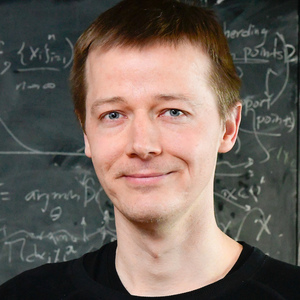Latent Dirichlet Allocation models discrete data as a mixture of discrete distributions, using Dirichlet beliefs over the mixture weights. We study a variation of this concept, in which the documents' mixture weight beliefs are replaced with squashed Gaussian distributions. This allows documents to be associated with elements of a Hilbert space, admitting kernel topic models (KTM), modelling temporal, spatial, hierarchical, social and other structure between documents. The main challenge is efficient approximate inference on the latent Gaussian. We present an approximate algorithm cast around a Laplace approximation in a transformed basis. The KTM can also be interpreted as a type of Gaussian process latent variable model, or as a topic model conditional on document features, uncovering links between earlier work in these areas.
| Author(s): | Hennig, P. and Stern, D. and Herbrich, R. and Graepel, T. |
| Book Title: | Fifteenth International Conference on Artificial Intelligence and Statistics |
| Volume: | 22 |
| Pages: | 511--519 |
| Year: | 2012 |
| Day: | 0 |
| Series: | JMLR Proceedings |
| Editors: | Lawrence, N. D. and Girolami, M. |
| Publisher: | JMLR.org |
| Bibtex Type: | Conference Paper (inproceedings) |
| Event Name: | AISTATS 2012 |
| Event Place: | La Palma, Canary Islands, Spain |
| Electronic Archiving: | grant_archive |
| Links: | |
BibTex
@inproceedings{HennigSHG2012,
title = {Kernel Topic Models},
booktitle = {Fifteenth International Conference on Artificial Intelligence and Statistics},
abstract = {Latent Dirichlet Allocation models discrete data as a mixture of discrete distributions, using Dirichlet beliefs over the mixture weights. We study a variation of this concept, in which the documents' mixture weight beliefs are replaced with squashed Gaussian distributions. This allows documents to be associated with elements of a Hilbert space,
admitting kernel topic models (KTM), modelling temporal, spatial, hierarchical, social and other structure between documents. The main challenge is efficient approximate inference on the latent Gaussian. We present an approximate algorithm cast around a Laplace approximation in a transformed basis. The KTM can also be interpreted as a type of Gaussian process latent variable model, or as
a topic model conditional on document features, uncovering links between earlier work in these areas.},
volume = {22},
pages = {511--519},
series = {JMLR Proceedings},
editors = {Lawrence, N. D. and Girolami, M.},
publisher = {JMLR.org},
year = {2012},
slug = {hennigshg2012},
author = {Hennig, P. and Stern, D. and Herbrich, R. and Graepel, T.}
}
